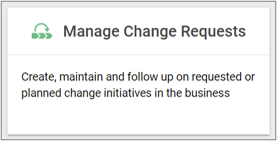A potential reason for winning over a competitor.
Template Type: Symbols
Class
A set of objects with identical characteristics.
In the Unified Modeling Language (UML) a Class is a kind of EncapsulatedClassifier whose Features are Properties, Operations, Receptions, Ports and Connectors.
Attributes of a Class are Properties that are owned by the Class. Some of these attributes may represent the ends of binary Associations.
Objects of a Class must contain values for each attribute that is a member of that Class, in accordance with the characteristics of the attribute, for example its type and multiplicity.
When an object is instantiated in a Class, for every attribute of the Class that has a specified default, if an initial value of the attribute is not specified explicitly for the instantiation, then the default ValueSpecification is evaluated to set the initial value of the attribute for the object.
Operations of a Class can be invoked on an object, given a particular set of values for the parameters of the Operation, according to the semantics specified in UML
A Class cannot access private Features of another Class, or protected Features on another Class that is not its ancestor.
A Class acts as the namespace for various kinds of Classifiers defined within its scope, including Classes. Nested Classifiers are members of the namespace of the containing Class. Classifier nesting is used for reasons of information hiding.
A Class may be designated by setting isActive to true as active (i.e., each of its instances is an active object). When isActive is false the Class is passive (i.e., each of its instances executes within the context of some other object).
An active object is an object that, as a direct consequence of its creation, commences to execute its classifierBehavior, and does not cease until either the complete Behavior is executed or the object is terminated by some external object. (This is sometimes referred to as ‘the object having its own thread of control.’) The points at which an active object responds to communications from other objects is determined solely by the Behavior of the active object and not by the invoking object. If the classifierBehavior of an active object completes, the object is terminated.
A Class’s Receptions specify which Signals the instances of this Class handle.
An InstanceSpecification may be used to specify the initial value to be created for a Class.
All instances corresponding to parts and ports of a Class are destroyed recursively, when an instance of that Class is deleted.
A Class may act as a metaclass in the definition of Profiles and metamodels.
Change Request
A ChangeRequest represents a request from an interested party for a change in the way the business is run, how the project is carried out, in the content of a design component in the repository etc.
It should always be clear to an organization how to handle a ChangeRequest. The process of analyzing the request, recommending an action and carrying out an action should be controlled by the project management or the resposible of the content associated to the change request.
 As standard a Change request can be created by all users, either from the “My Desktop” or in relation the approved content as part of the standard change management governance flow.
As standard a Change request can be created by all users, either from the “My Desktop” or in relation the approved content as part of the standard change management governance flow.
Change Requests are also used to document findings in relation to an audit.
Read more about how to manage change requests here
Certificate
A certificate is used by a Person or an OrganizationUnit and grants the rights to perform specific Activity in the company.
It may also be used to define and document the results of training, education etc.
Business Scope
The Business Scope symbol represents the boundaries or extent of a business’s operations, activities, or responsibilities. It is used to define what the business is and is not responsible for and can help to clarify the focus and goals of the organization.
Examples of how the business scope symbol can be used in a diagram include:
-
- Business diagram: In a business diagram, the “Business Scope” symbol could be used to define the boundaries of an organization or a particular business unit. For example, it could be used to indicate the range of products and services offered by a company, or the geographical areas where it operates.
- Business process network: In a business process network, the “Business Scope” symbol could be used to indicate which processes and activities fall within the scope of a particular business unit or department. This could help to clarify the responsibilities and objectives of each unit, and ensure that processes are not duplicated or neglected.
- Regulation diagram: In a regulation diagram, the “Business Scope” symbol could be used to indicate which parts of a business are subject to specific regulations or compliance requirements. For example, it could be used to highlight the areas of a company that must comply with environmental regulations, or those that are subject to data protection laws. This can help companies to ensure that they are following all relevant regulations and avoid potential legal or financial penalties.
Overall, the business scope symbol is a useful tool for providing clarity and focus in diagrams, helping to ensure that everyone involved in a project or business understands the scope and boundaries of the work.
Business Process
A business process is a set of activities that are performed in a structured and sequential manner to achieve a specific business outcome. Business processes can range from simple, straightforward activities, such as processing an invoice, to complex, multi-step processes, such as launching a new product.
Business processes typically involve the interaction of people, systems, and data, and they are often supported by technology and other tools. They are designed to achieve specific goals and objectives and to support the overall mission and strategy of the organization.
There are several types of business processes, including:
- Operational processes: These processes support the day-to-day operations of the organization and include activities such as customer service, order fulfillment, and payroll processing.
- Support processes: These processes support the operational processes and include activities such as human resources, finance, and procurement.
- Management processes: These processes support the decision-making and strategic planning activities of the organization and include activities such as budgeting, strategic planning, and performance management.
Business Object
A business object is used to represent a real-world entity or concept that is relevant to a particular business domain. Business objects are abstract representations of the key components of a business, such as customers, products, transactions, and processes, that are used to model and understand the operations of an organization.
For example, the “business object” symbol might be used to represent a customer in a retail business. This symbol might be connected to other symbols, such as “products” or “transactions,” to show how customers interact with the retail business and purchase products. Similarly, the “business object” symbol might be used to represent a product in the retail business and show how it is sold to customers and how it is managed by the business.
Business Function
A BusinessFunction defines a part of the organization that has the responsibility to carry out a special function. A BusinessFunction has resources available that are managed from within the function.
A BusinessFunction can be an operational function. Which means a function where the products and services of the organization are produced.
A BusinessFunction can also be a management function. Which means a function that carries out management such as planning or control.
The objectives and available resources should be described for every BusinessFunction. It is also important to decide if the function plays an essential role in the current business analysis.
If a BusinesFunction consists of other BusinessFunctions the upper level function should be broken down to a new BusinessDiagram showing the details within the function.
Business Event
In the context of workflow diagrams and business process networks, a Business Event serves as a pivotal element that signifies specific occurrences, triggers, or decision points. Its primary purposes and core concerns are:
- Initiation: Business Events often mark the commencement of certain processes or workflows. For instance, external stimuli like a customer order or market fluctuations can act as initiators.
- Influence & Adaptation: Occurring amidst ongoing processes, these events might represent receipt of vital data, external interruptions, or significant decision-making junctions that can influence the course of the process.
- Conclusion: Signaling the termination of a process, these events can denote successful completion, abrupt halts, or transitions to another process.
Throughout, the overarching concern of Business Events is to capture real-world scenarios, external influences, and key decision junctures, ensuring accurate and actionable business process modeling.
Business Connection
A BusinessConnection act as a commercial partner in the described processes. A BusinessConnection can take the role of a supplier, subcontractor or customer.










